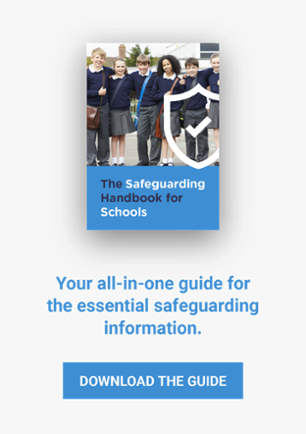Anyone who works closely with children or young people has certain safeguarding responsibilities. Although it’s a subject that was likely covered in great detail during your initial training, it’s vital that all staff complete refresher courses to ensure they’re prepared for any situation. Here’s how training in safeguarding can benefit you in your role.
7 Benefits of Regular Safeguarding Training
- Identifying Vulnerable Children
- Recognising the Common Signs of Abuse
- Reporting Abuse Effectively
- Establish Trust Between Pupils and Staff
- Prepare for a Disclosure
- Feel Comfortable and Confident
- Improve Team Communication
1. Identifying Vulnerable Children
A key part of safeguarding is the ability to identify children who are at risk. Abuse and neglect can have many forms, so it’s vital that all members of staff put aside any prejudices or preconceived judgements they might have.
Any child can experience abuse and be in danger. It’s your responsibility to spot the right signs and take the necessary action.
2. Recognising the Common Signs of Abuse
Abuse doesn’t have the same effect on everyone. One child’s behaviour might change so that they’re more withdrawn, quiet and sombre. Another child who’s also experiencing abuse or neglect might suddenly be more loud and disruptive at school.
Regular training ensures you know the signs to look out for so you can intervene and make sure the child gets the support they need.
3. Reporting Abuse Effectively
Once a member of staff has identified a possible child in need of support, it’s vital they know what to do next. Regular training ensures they pass the details of the case to the relevant authorities.
Without this knowledge, a member of staff might be reluctant to intervene because they’re not sure what the process is. A child that’s been brave enough to report abuse wants to know that the right people will be told. Regular training can make sure this always happens.
4. Establish Trust Between Pupils and Staff
Young people want to know that a support network is in place should they ever need it. If they see that staff have completed regular training and implemented safeguarding practices, then they’re more likely to feel comfortable enough to come forward if necessary.
The same applies to staff, volunteers and parents. Establish your school as one that takes safeguarding incredibly seriously and everyone that’s part of the school family will trust that good practices are followed.
5. Prepare for a Disclosure
Training allows you to examine real-life disclosures to prepare for a similar situation in the future.
These discussions can be stressful, emotional and complicated, so it’s beneficial that you have an idea of what to expect before you negotiate the difficulties of the real thing.
6. Feel Comfortable and Confident
Trained staff are more confident in any situation they might be presented with. Having regular training ensures that all members of staff can take decisive action if necessary.
You’ll have the knowledge you need to effectively protect children and deal with difficult scenarios calmly and in the right manner.
7. Improve Team Communication
To ensure that your school has the best possible environment for both pupils and staff members to thrive, communication needs to be a priority. Pupils should be able to speak comfortably to staff and vice-versa.
Safeguarding training helps to improve your communication skills, particularly how you communicate with children. By establishing a rapport with students and establishing trust, you can ensure a child feels comfortable enough to speak to a member of staff about abuse or neglect.
What You’ll Learn During Safeguarding Training
Subject material varies from course to course but there are some topics and relevant information you can expect to find. Each of them will, of course, focus on different aspects of safeguarding and child protection, providing insight into best practices via real-life examples.
For some members of staff, safeguarding training can be a little bit of a shock. They might not realise just how many different types of neglect and abuse there are that children can be victims of.
Even though this information can be upsetting, staff members must know what these abuse types are and the signs to look out for that might indicate something isn’t right. Although a change in behaviour doesn’t always point to a child experiencing abuse, it’s still vital to know what these signs are so that if abuse is taking place, staff are ready.
Training is available online or at events and should be attended by anyone at the school that has regular contact with pupils. It’s a mistake to think that only teachers are responsible for a child’s wellbeing. Staff members at all levels of the school should be able to notice warning signs and know what to do if a child discloses information of abuse.
For more information on what to expect during a disclosure and what your responsibilities are at a school, feel free to download our handbook.
Safeguarding in Schools: Everything You Need to Know
We’ve created a free handbook that’s packed with essential information about safeguarding in schools. From the responsibilities of each member of staff to the signs to look out for in vulnerable children.
Download your free copy of the handbook now and consider your existing safeguarding processes.
